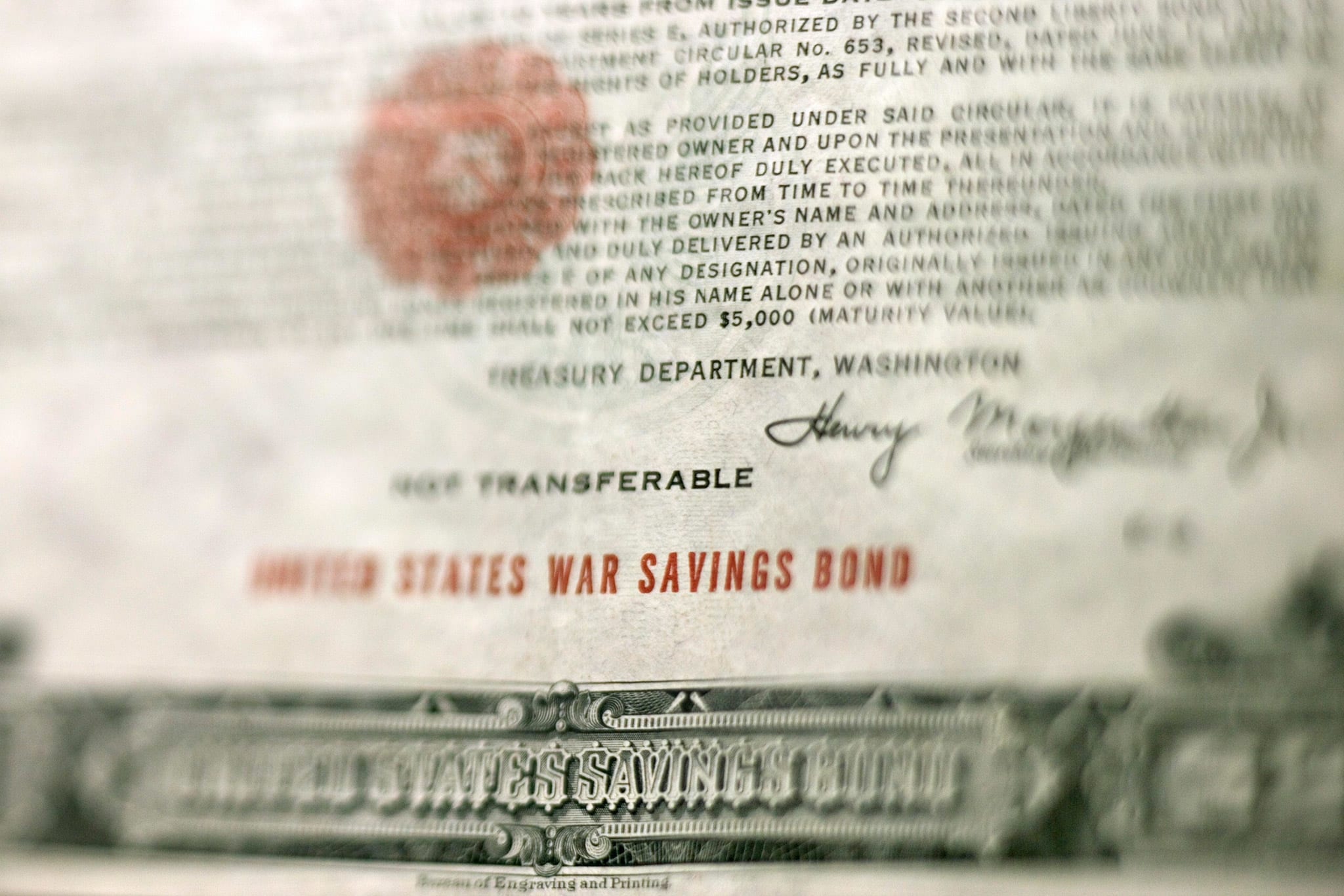My colleague, Jim Cramer, made a very interesting recommendation Monday morning, calling on the U.S. Treasury to issue a $1 trillion, 30-year “war bond” to finance out battle against the coronavirus.
He pitched the idea on CNBC to Larry Kudlow, who chairs the White House National Economic Council and promised to propose the idea directly to President Donald Trump.
The U.S., of course, has issued war bonds in the past, and in the context of actual military conflicts, both in World Wars I and II.
The government back in 1917 went so far as to enlist the help of celebrities such as Charlie Chaplin, Douglas Fairbanks, Mary Pickford and Ethyl Barrymore to sell Liberty Bonds.
Bob Hope, Bing Crosby, Barbara Stanwyck and Humphrey Bogart aided a similar effort during World War II.
This time around, perhaps, JLo, Kanye West, George Clooney and Jennifer Aniston might oblige.
Patriotic Americans snapped up the bonds and helped finance the war efforts.
Similarly, today, the U.S. is engaged in a war against a virus that has brought economic activity to a virtual halt, causing unemployment to immediately skyrocket and a possible plunge in second-quarter gross national product by 30%, or more.
The war-bond concept is a solid one insofar as demand for high-quality debt is rising among institutional and individual investors.
I have long been in favor of the U.S. extending the maturity of its borrowings since the Great Recession drove interest rates to record lows.
The U.S., however, has not been terribly aggressive in marketing such debt instruments, and lenders haven’t been terribly enthusiastic about trading away higher yields for the near certainty that the U.S., still a AAA credit, will pay them back in full. However, this could be one of those moments where the borrow and lender come to mutual agreement on a long-dated Treasury that yields 2%.
In addition to America’s relatively high credit quality, it also is still borrowing at higher rates than most of the rest of the world.
Even if the U.S. deficits surge, estimated to climb as high as 7% to 10% of the nation’s GDP in the next two years, America’s debt-to-GDP ratio, while growing, will remain below those of Japan, China, Italy and most other developed countries, reducing the relative risk of buying a U.S. bond.
One issue may require some assistance from the Federal Reserve to blunt potential principal losses to those who buy the bonds.
The “duration” of a 30-year bond with a 2% yield, is just over 22 years, meaning a bondholder’s breakeven on such a long-term bond is around 22 years.
In the meantime, the principal value of a long-term bond fluctuates more wildly with every 1% move interest rates than do short-term debt instruments.
It’s a factor that keeps many from snapping up high quality but lower-yielding securities whose maturities are three decades out.
Some investors have speculated that the Federal Reserve may put a cap on Treasury yields all along the yield curve.
Now, the Fed cannot guarantee that it will hold 30-year bond yields at, or below, 2% forever. However, by using its forward guidance, the Fed can say it will cap the curve unless or until inflation rises above a new numerical target, or when nominal growth exceeds a certain threshold, say 5%.
Such a move would reduce the risk of owning long-dated Treasurys and make the issuance of a war bond far more palatable than leaving the interest rate market to its own devices.
Given that the Treasury and the Fed, via the recent CARE bill passed by Congress, are now working in concert in ways never before seen, such a mutually reinforcing arrangement would help the U.S. dig its way out of this biologic shock and pave the way for the government to finance much-needed relief — now and in the months to come.
